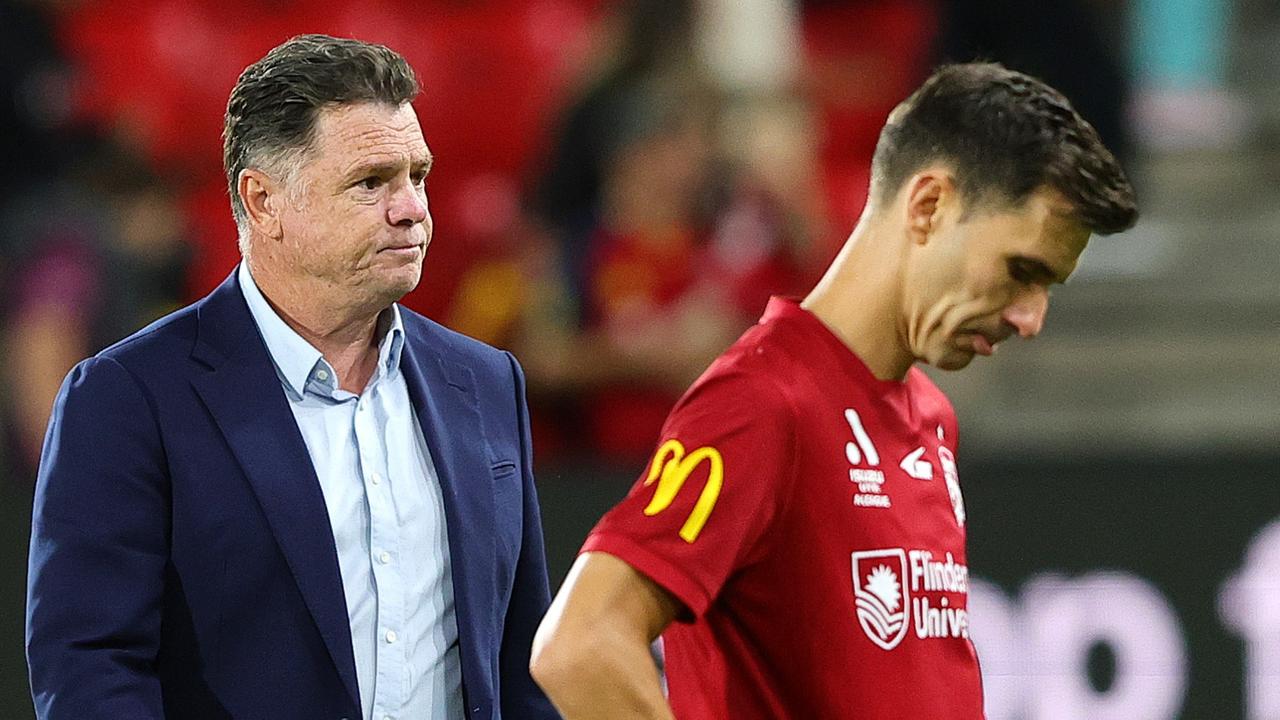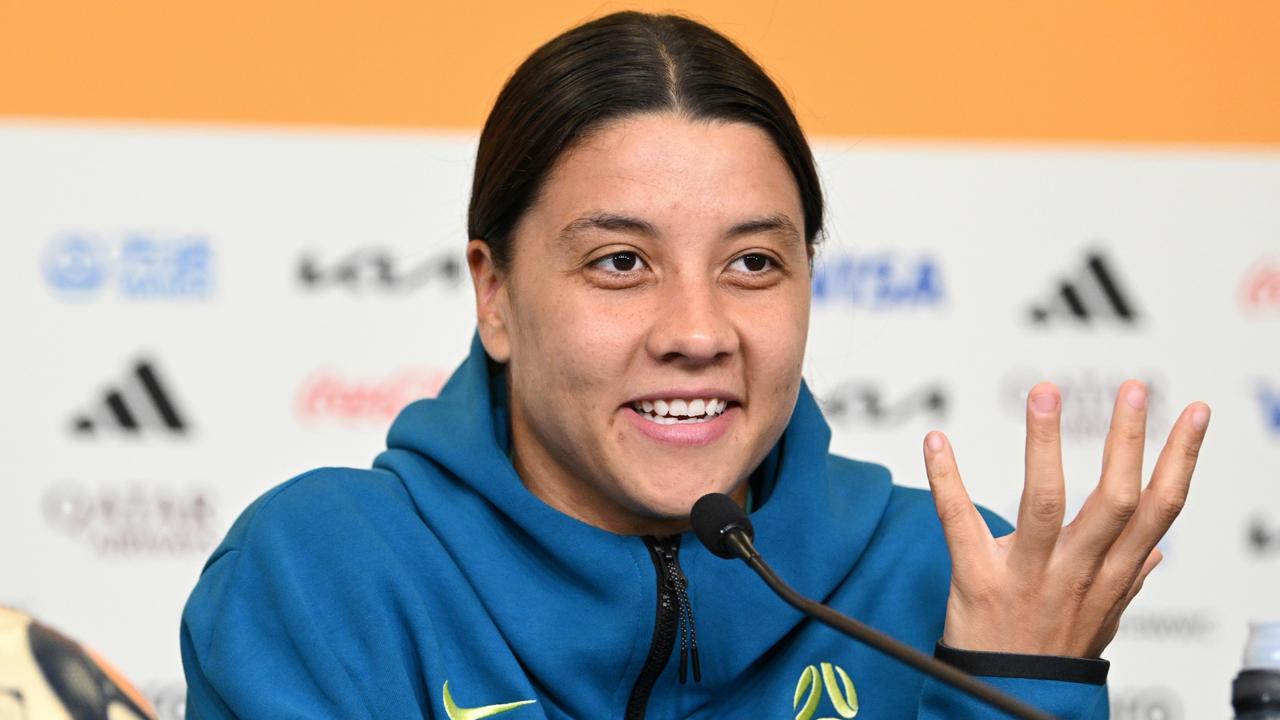Editorial: Brisbane needs a live site worthy of the Matildas
The State Government has taken the easiest approach, rather than doing the hard work and organising a venue deserving of this most amazing of national teams, writes the editor.

Football
Don't miss out on the headlines from Football. Followed categories will be added to My News.
The Matildas deserve more when it comes to a place for Brisbane fans to gather and watch Wednesday night’s blockbuster semi-final against England than a simple expansion of the modest live site at South Bank Parklands.
The State Government has taken the easiest approach here, rather than actually doing the hard work and organising a venue deserving of this most amazing of national teams.
In Sydney the government will open two stadiums with a combined capacity of 75,000 for fans to watch (on top of the actual game venue, the 80,000-seat Olympic Stadium). In Melbourne, the 30,000-seat AAMI Park will be opened. These are in addition to the existing FIFA live sites in both cities.
But here in Queensland, Sport Minister Stirling Hinchliffe believes a slight expansion to FIFA’s little patch of fenced-off grass at South Bank will suffice – because having to organise public transport for the Gabba, well, it’s too difficult. Pfft.
As we saw on Saturday night in amazing scenes at other stadiums, in pubs and even on planes, the mighty Matildas have united us in a way not experienced since Cathy Freeman won gold in Sydney at the 2000 Olympics – and we want to watch them together tomorrow.
Viewing the game in pubs will be fun if you are an adult. But this team says it is motivated by inspiring the next generation, and a packed pub after 8pm is no place for kids.
It’s just not good enough, and it does make you think: would these politicians be so reticent to organise an appropriately large live site if this was our MEN’S soccer team in the semi-final of a home World Cup?
GAMES DEMAND AN OPEN PROCESS
Once you have swallowed the fact the government will spend billions on a new stadium at the Gabba, your next thought is to hope the best possible new venue is delivered.
That is why it is a fair point to call for the procurement process for all the new venues to be transparent – as an alliance of architects featuring HKS, Buchan and Nikken Sekkei did over the weekend.
Their motivation is obvious, but their intervention does raise some questions – such as how exactly has the Palaszczuk government so far come up with its $2.7 billion Gabba redevelopment plans, and who exactly have they been talking to?
The alliance of architectural groups fear a closed procurement process could deliver an uninspiring new Gabba, when instead this is a massive opportunity to deliver an instantly recognisable and “distinctly Australian” main stadium from the rare clean slate offered by the decision to raze the existing venue from 2026.
A state government spokesman said discussions with engineers, architects, contractors and industry bodies were underway as part of a project validation report process.
But this is all happening in secret and in-house, thanks to the decision earlier this year by the Palaszczuk Government that it did not need an independent body to oversee delivery of the infrastructure for the Olympic and Paralympic Games.
This was despite the fact an Olympic Co-ordination Authority – with representatives from all three levels of government – was a key promise made to the International Olympic Committee in our bid.
Instead, the government – armed with a still-to-be-released $800,000 consultancy report from Deloitte and an endorsement of sorts from Australian Olympics supremo John Coates – this year decided to bring this essential work in-house.
The government’s arguments for the change were, on the face of it, quite reasonable. The key argument was why a whole new level of bureaucracy was necessary when the state would be delivering most of the necessary venues itself.
The government also pointed out that the “leaders forum” providing input to the in-house Brisbane 2032 Co-ordination Office would be comprised of representatives from state, federal and local government – plus the Organising Committee president Andrew Liveris.
But the model chosen by the Queensland government to deliver the games infrastructure has one big and obvious potential flaw – it allows for political interference and lack of clarity about big decisions.
The head of the Co-ordination Office, respected director-general Graham Fraine, reports to the premier – who also happens to be chair of the leaders forum. It is a structure that quite clearly means the critical Games infrastructure delivery model that was sold to the IOC as being independent looks very much like it is anything but.
We understand the Premier’s desire to keep a close eye on things. But it is just so critical to a successful Games that political considerations do not get in the way of making the best decisions. This is the key lesson from all previous host cities.
And if an alliance of architects legitimately responsible for some of the world’s most recognisable stadiums suggests things should be run more openly, we would suggest they should be listened to. Their self-interest is obvious, but they certainly don’t have a mortgage on that when it comes to these issues.
More Coverage
Originally published as Editorial: Brisbane needs a live site worthy of the Matildas



